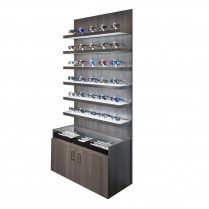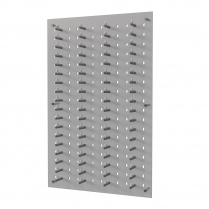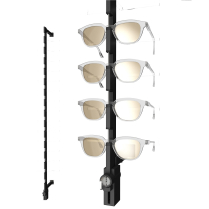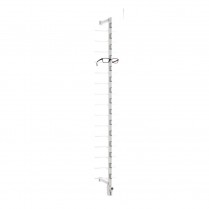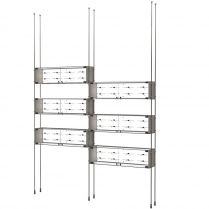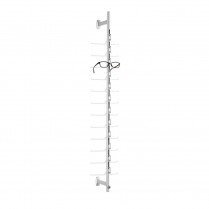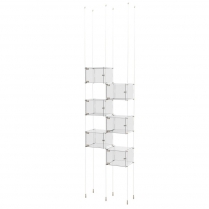The title of this blog is probably misleading in that it might best be stated as “Why should my displays be locked”?! In most stores, there is a required mix of both high-end ophthalmic frames and nonprescription sunglasses along with more moderately priced merchandise. It is much less likely that you will experience theft in the moderate lines, but you can rest assured that you will experience shrinkage in the higher end and sunglass lines. The average store will have about 15% of the merchandise that needs to be secured from theft, but this does not include sunglasses.
 There are numerous ways to secure your eyewear, but BE ADVISED, NONE of them are foolproof. Each option for merchandising secure inventory creates an option for either positive interaction with the client or possible avoidance from helpful interaction. Based on interactive market research the most effective way to ensure your inventory goes undisturbed is behind locked glass. HOWEVER, it is also the LEAST EFFECTIVE way to sell the product. In side-by-side testing, items secured behind glass provide a psychological barrier between product, salesclerk and client that is hard to overcome. If someone is noticed looking in a glass showcase the negative interaction can only be avoided when the clerk opens the case simply exposing the product. Otherwise, the human reaction to seeing someone browsing is, “may I help you”. Unfortunately, the inverse reaction is, “no thanks, I’m just looking”. This is a clear path to a lost opportunity to sell.
There are numerous ways to secure your eyewear, but BE ADVISED, NONE of them are foolproof. Each option for merchandising secure inventory creates an option for either positive interaction with the client or possible avoidance from helpful interaction. Based on interactive market research the most effective way to ensure your inventory goes undisturbed is behind locked glass. HOWEVER, it is also the LEAST EFFECTIVE way to sell the product. In side-by-side testing, items secured behind glass provide a psychological barrier between product, salesclerk and client that is hard to overcome. If someone is noticed looking in a glass showcase the negative interaction can only be avoided when the clerk opens the case simply exposing the product. Otherwise, the human reaction to seeing someone browsing is, “may I help you”. Unfortunately, the inverse reaction is, “no thanks, I’m just looking”. This is a clear path to a lost opportunity to sell.
The other more “interactive” options for securing inventory and allowing direct interaction are with either security tags, retractable cable locks or multiple or single locking displays. Each of these systems has both positive and negative aspects that underscore the fact that having to lock merchandise is not desirable for positive sales opportunities. The security tags allow the most freedom to try on frames and require no salesperson interaction. The downside of the tags are that they are typically bulky and uncomfortable when trying on the frame. In recent years, clerks were not allowed to interdict any thieves that would grab inventory and simply run out of the store setting off the alarms. Retractable cable locks allow for inspection of the eyewear but are uncomfortable and hard to manage for any “try on”. The last option for either multiple or single locking displays requires direct sales interaction but likely provide the best option for a sale due to the personal touch that is inserted into the process.
Whatever system you use, the goal is to balance the need to reduce inventory shrinkage (theft) and encourage (not discourage) sales. This can be achieved in any of the systems as long as proper sales training is given to minimize the deficiencies in any system used.

